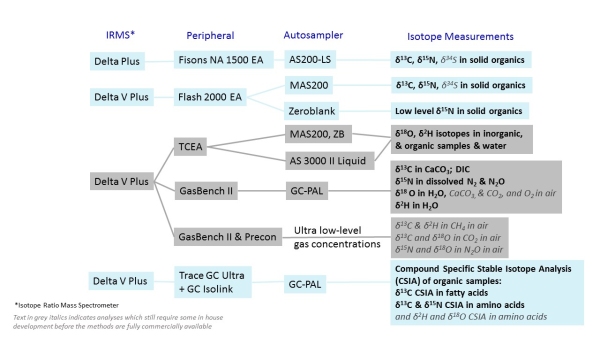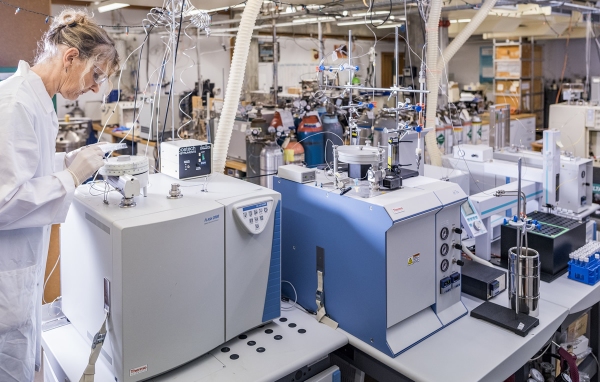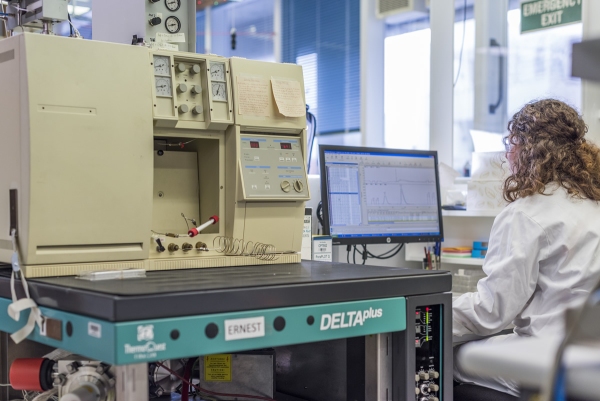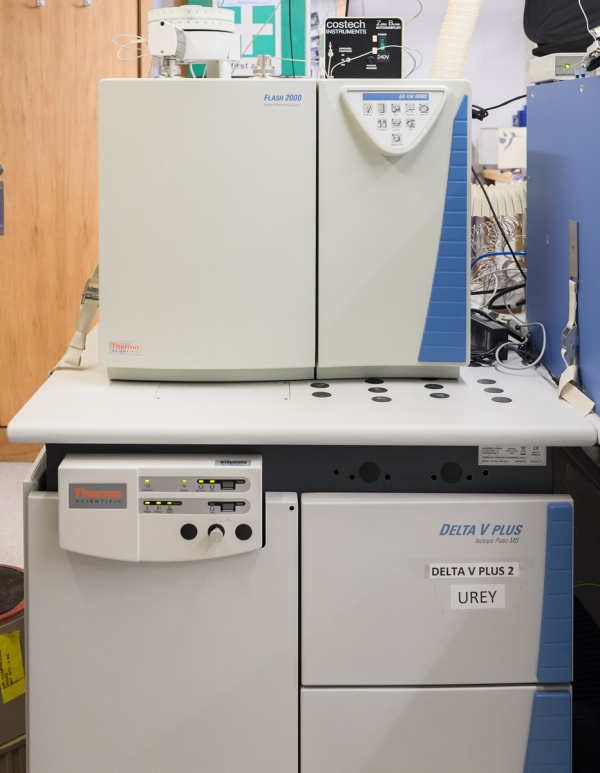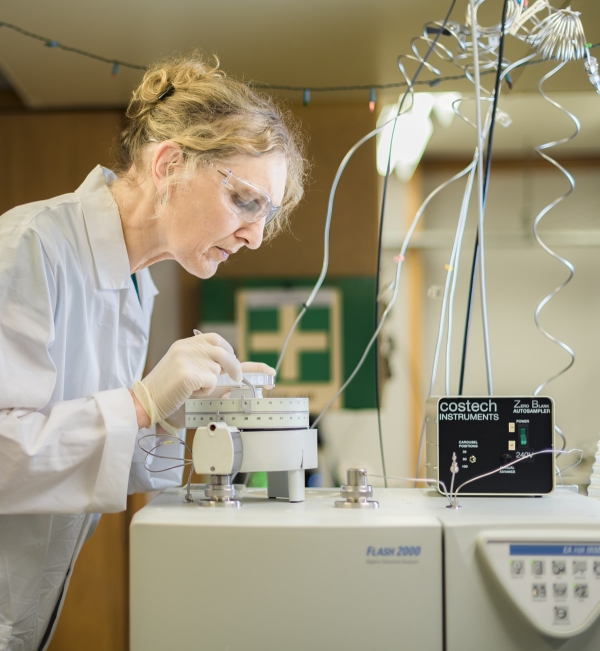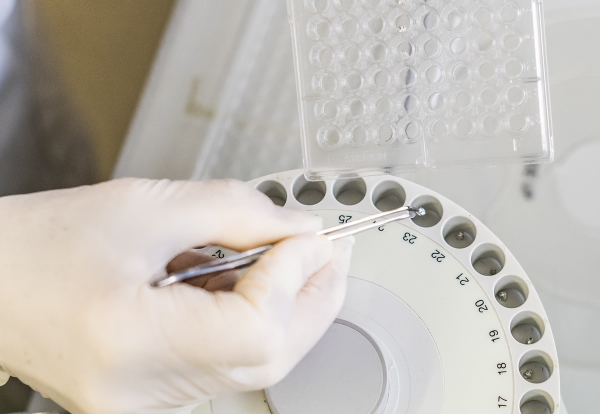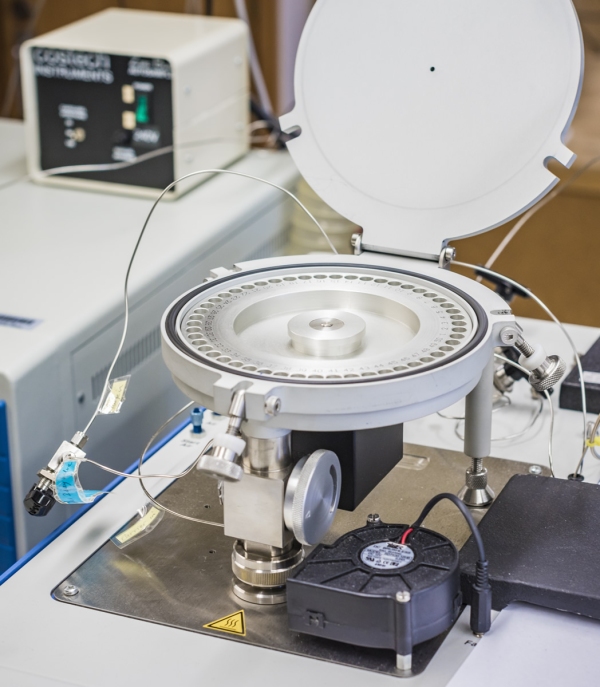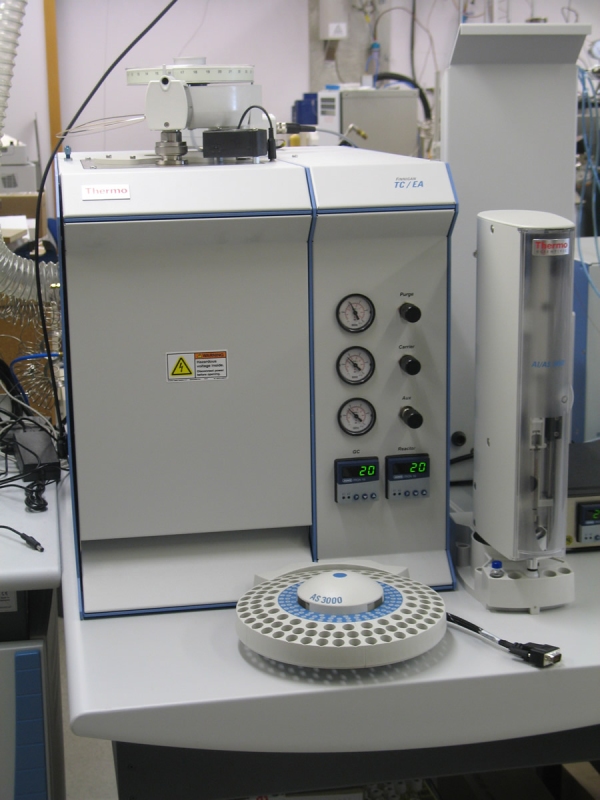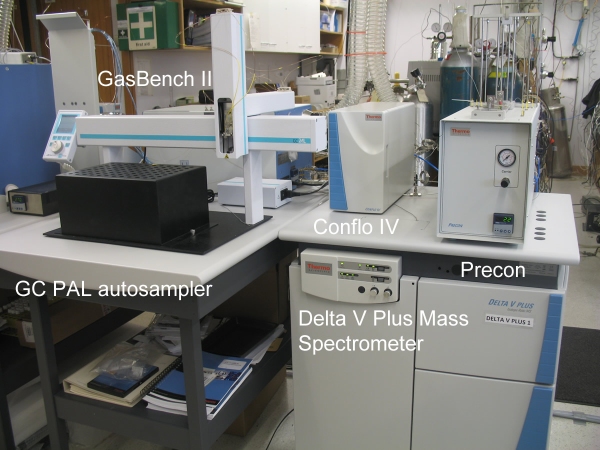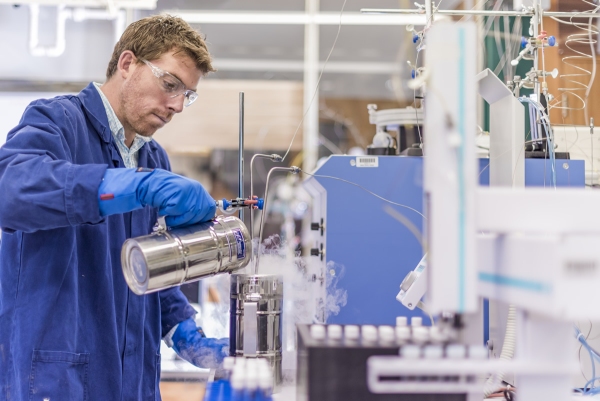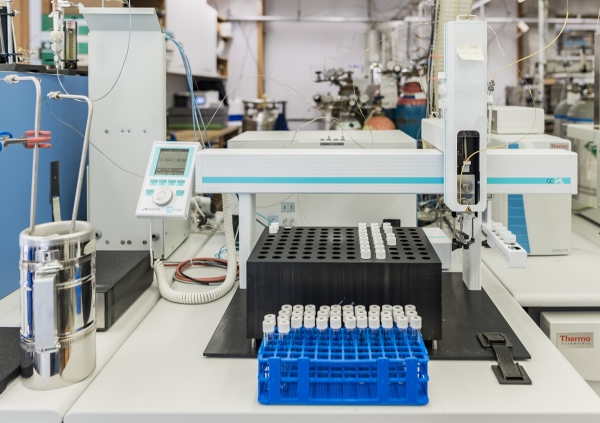Quality Service, Research & Development Focus
NIWA’s recent multi-million dollar stable isotope facility upgrade has widened our spectrum of isotopic analyses to include a diverse array of water, gas and solid-matrix sample analyses, delivering highly accurate and precise results.
Stable isotope analyses from our Delta Series mass spectrometers and their peripherals (Elemental analyser (EA), GasBench II, Precon and high Temperature Conversion Elemental Analyser have wide-ranging applications in many areas of environmental research.
Elemental analysers linked to Thermo Fisher Scientific DeltaPlus and Delta V Plus mass spectrometers enable us to analyse carbon and nitrogen concentrations and isotope ratios in solid samples from freshwater, marine and terrestrial environments with a focus on ecological studies. The TCEA enables us to analyse oxygen and hydrogen in solid and liquid samples. This has now widened our scope to include research into hydrological, palaoenvironmental and trace gas studies.
In ecological studies, stable isotopes are an extremely useful determinant of the trophic status of organisms and an indicator of their diet. There is a slight variation in C and N stable isotope values between an organism and its food source, which has resulted in the statement "You are what you eat, plus or minus a few per mil". Nitrogen isotopes are the strongest indicators of trophic status, showing a step-wise enrichment in 15N of about 3–4‰ at each successive trophic level. By combining C and N isotopic values of a consumer, it is possible to deduce its likely dietary intake and resolve complex food web structures.
Sample types: muscle, liver, blood, skin, whisker, hair, plant material, sediment/soils
Research applications in oceanic, freshwater and terrestrial environmental research:
- trophic studies, dietary mixing models
- provenance (source identification and source apportionment)
- substance tracing and tracking
- animal migration studies
- study of spatial and temporal changes in ecology, climate and palaeoclimate.
Ultra-low nitrogen analysis
Sample types: single specimens of very small organisms (e.g. nematodes, ants, zooplankton, bacteria)
Research Applications:
- improved understanding of community level interactions and complexity at base of food webs
- fine scale chronological sampling of archived materials (e.g. coral, teeth, otoliths, shells) to investigate ontogenetic, environmental and climate change effects
By re-configuring the Flash 2000 EA components, and minimising the ingress of laboratory air using a Zeroblank autosampler we can now accurately analyse N isotopes in samples containing as little as 1 µg N.
High Temperature Conversion Elemental Analyser (TCEA)
Sample types: organic, inorganic and water samples
Research applications:
- O isotopes of plants and soils: terrestrial water dynamics, climatology and palaeoclimate
- H isotopes of plants, soils, feathers, claws and chitin: ecological processes and animal migration pathways
- O and H isotopes of water: water origins, oceanography and hydrology, precipitation and groundwater isotopic maps (isoscapes)
GasBench II
The GasBench II is an on-line preparation system to the IRMS, capable of high throughput analysis of C, N, O and H isotopes in carbonates, water and gas samples. The Precon unit concentrates gases for analysis of ultra low-level gas concentrations.
Sample types and research applications:
- H and O in water: climate, hydrological, oceanic water mass, ecological and animal movement studies
- O and C in carbonates: palaeoceanographic and climate studies
- C in atmospheric methane and dissolved methane: C cycling and climate studies
- C in dissolved inorganic carbon: carbon flux and palaeoclimate research
- 15N/14N of N2, plus 15N/14N and 18O/16O of N2O: terrestrial, aquatic and atmospheric nitrogen cycle studies.

